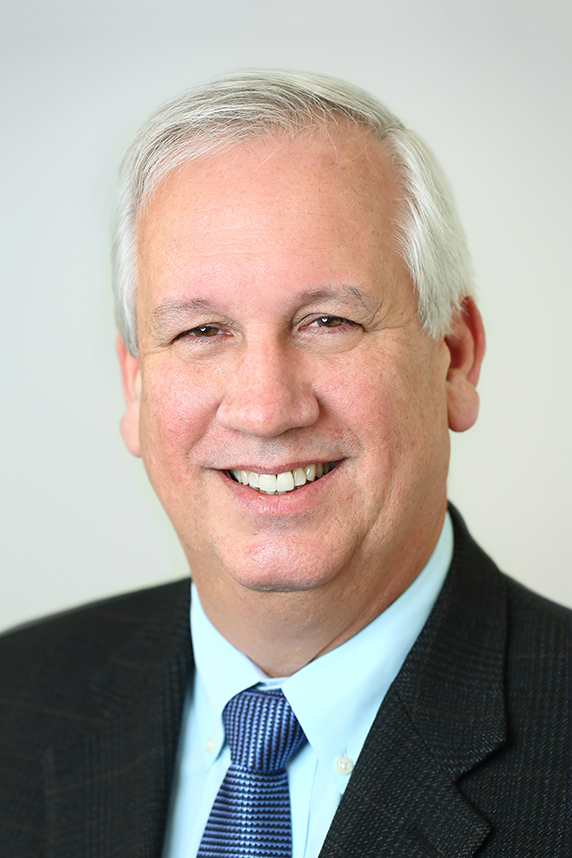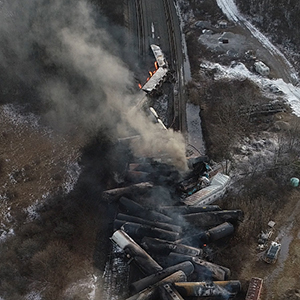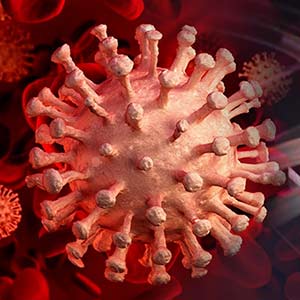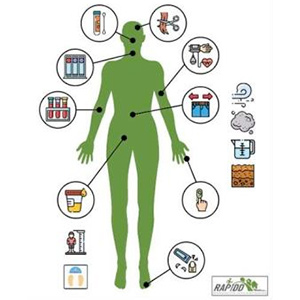A new collection of resources and tools for epidemiologists, clinicians, and other scientists studying COVID-19 became available in April thanks to the National Institutes of Health (NIH) Disaster Research Response (DR2) program. DR2 is led by NIEHS in collaboration with the National Library of Medicine (NLM).
In addition to the new COVID-19 resources, DR2 offers a collection of over 350 disaster related data collection tools. The resources include survey questions already in use, training materials, and study protocols pre-reviewed by institutional review boards. The collection has been used to help improve study designs and speed the launch of time-critical studies in response to Hurricane Harvey, wildfires, and other disasters.
 Miller said the NIH effort will help researchers work fast and smart by helping them readily access available instruments that are highly credible and in-use by others. (Photo courtesy of Steve McCaw)
Miller said the NIH effort will help researchers work fast and smart by helping them readily access available instruments that are highly credible and in-use by others. (Photo courtesy of Steve McCaw)The new data collection tools and protocols, hosted by DR2 in collaboration with the NIH-funded PhenX Toolkit, will enable research using these tools to be more easily compared and more broadly applied, according to NIEHS Senior Medical Advisor Aubrey Miller, M.D. “Researchers can build on each other’s efforts, rather than having many unique surveys whose findings cannot be combined,” he explained.
For example, something as simple as the definition of a probable — that is, untested — case of COVID-19 can vary depending on the institution conducting the study, such as the U.S. Centers for Disease Control or the World Health Organization. Such variations make it difficult to compare and interpret the findings.
Sharing encouraged
William Riley, Ph.D., head of the NIH Office of Behavioral and Social Sciences Research (OBSSR), encouraged scientists to select COVID-19 survey items and protocols from these repositories. “Researchers with additional survey items about to be fielded are encouraged to make them public for other researchers to consider, by submitting the survey to NIHCOVID19Measures@nih.gov,” he wrote in an April 16 news announcement.
Such public sharing of survey tools is uncommon, yet especially important in an emergency, according to NIEHS Acting Deputy Director Gwen Collman, Ph.D. “People generally publish their findings, not their data collection tools,” she explained. “Now, instead of spending weeks or months to develop them, or days trying to locate them, researchers can save valuable time by seeing how a question has already been asked.”
A remarkable feat
OBSSR has led NIH efforts to ensure that coronavirus-related data collection tools were posted on the DR2 website and the PhenX Toolbox, to improve the usability of high value resources. These resources support studies of the pandemic that need to be fielded in just a few weeks — a phenomenally short time. When asked about these ongoing efforts, Miller said that it is all hands-on-deck right now to help support the research community through NIH platforms.
“We are working with researchers from across NIH, under short timelines of high-intensity activity to help support the NIH research enterprise response to this crisis, from multiple perspectives,” he said.
 Riley noted that since the pandemic began, researchers with studies already underway began developing new survey items to assess such topics as knowledge and attitudes, symptoms, and social and economic impacts.
Riley noted that since the pandemic began, researchers with studies already underway began developing new survey items to assess such topics as knowledge and attitudes, symptoms, and social and economic impacts.Riley agreed. “The staffs involved in PhenX and DR2 have been absolutely wonderful in working with the NIH wide group to get a listing of COVID-19 survey items posted, so others can use what already exists instead of creating their own,” he said. Thus the urgency — every day new studies were being launched, and organizers wanted to make the results as useful as possible.
Resources to meet the need
“DR2 was built for just this type of situation — to make us more resilient during a public health emergency or disaster — in response to the 2013 call from Dr. Collins and others,” Miller said. He was referring to a publication by NIH Director Francis Collins, M.D., Ph.D.; Nicole Lurie, M.D., then-assistant secretary for preparedness and response; and colleagues, calling for an effort to overcome challenges to conducting research in response to public health emergencies.
Miller noted that the 2009 H1N1 flu pandemic and the NIEHS efforts to respond to the 2010 Gulf Oil Spill were among the scenarios discussed when designing the program. Below are some examples of materials available through the DR2 site specifically focused on the COVID-19 efforts.
- Worker safety training(https://tools.niehs.nih.gov/wetp/covid19worker/) materials developed by NIEHS specific to COVID-19 and other disasters.
- More than 35 questionnaires from clinical and population studies already underway, covering pregnancy, children, adults, and differing populations on a range of issues including health, social, economic, and mental health impacts.
- Links to COVID-19 measurement protocols, hosted on the PhenX Toolkit platform.
- Links to information for researchers who have or are seeking NIH funding.
The collection evolves quickly as users submit new resources, Miller added.
Citation: Lurie N, Manolio T, Patterson AP, Collins F, Frieden T. 2013. Research as a part of public health emergency response. N Engl J Med 368(13):1251–1255.









